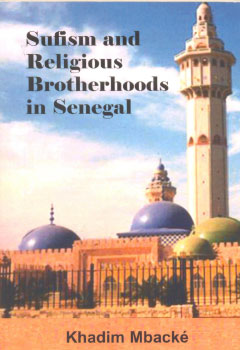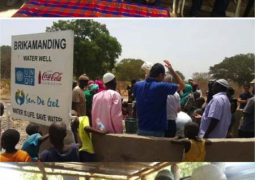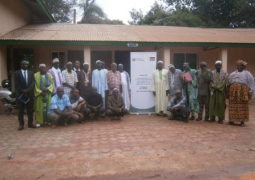
Khadim Mbacke, 2005, 141 pages
Explaining the Senegal's tariqas and marabouts
Even to the keenest of observers, the multitudes of Islamic sects or brotherhoods in Senegal can appear too complex to fully comprehend. The Tijan, Mouride, being the two main ones; however, the Tijan are sub divided into Niassene, Qadir, Layenne, Syenne and others. Khadim Mbacke's book is therefore a handy encyclopedia, despite its slim size, on the formation, nature, leadership and socio-political impact of the brotherhoods in Senegal.
Chapter one deals with the origins of Sufism, which encompasses the Senegal brotherhoods. Here the author traces the history of the originator of Sufism in the 6th century Abd al-Qadir al-Jilani who died in AD 1166. He gave his name to the Qadiriya sect, one of the main Islamic brotherhoods in Senegal (p.15). The author maintains that the diffusion of this sect started in Senegal in the late 18th century as a result of the activities of itinerant preachers like Muhtar Al Kunti.
In Chapter three and four, the author traces the origins of the Tijaniya sect and delves into its numerous offshoots such as the Niassene of Sheikh Abdullahi Niasse, the Sy of Tvavoune of Alhaji Malik Sy, the Tallen of Alhaji Sheikh Omar Tall, amongst others. With an experts touch, the author dissects how these sects interact with each other.
Chapter 5 is on the largest and most influential Mouride sect, p.45, of Mam Bamba Mbacke of Touba. He was born in 1853 and died in 1927. He was both a religious leader and anti-colonial resistant leader. His sect became noted for hard work, piety and fierce loyalty to their caliphs or seringe. On page 64, the author discusses the colourful and controversial Mouride sub-sect called the baay faale, who appear in dread locks and are seen as the shock troops of the sect.
In chapter seven, the author notes the contribution of the brotherhoods in Senegal society. They run schools, huge farms, are heavily involved in commerce, and politics. Moreover, they run huge libraries where the works of their founders are kept and studied. The role of the brotherhoods in Senegal nationalist politics in the 1950s is well discussed in p.100. the author concludes that today, the brotherhoods cannot be ignored for they command both religious and material power.
This book gives a singular insight into the role of the Islamic sects in Senegal. It is highly recommended.
Available at Timbooktoo Tel:4494345.
Read Other Articles In Article (Archive)
The debt stock is worrying
Dec 3, 2014, 10:15 AM
Nawettan roundup
Sep 20, 2013, 11:46 AM



